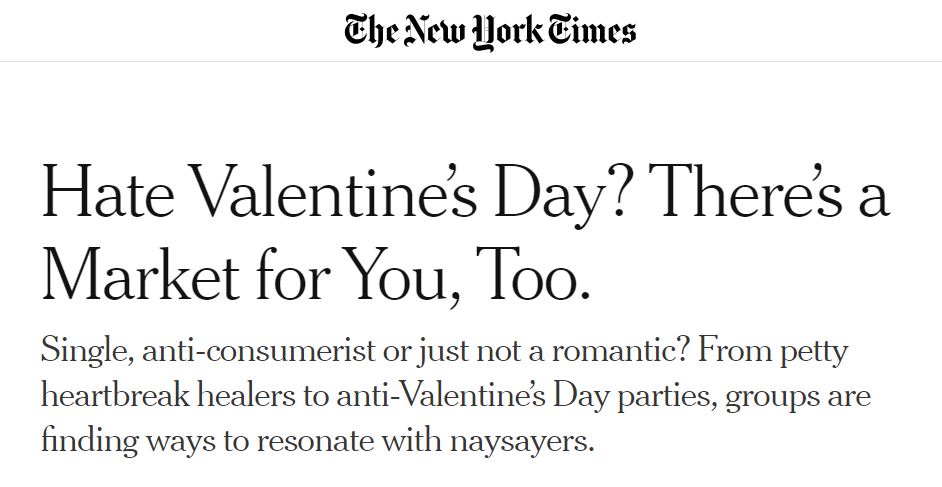I was recently quoted in a New York Times article exploring the increasing demand for anti-Valentine’s Day activities. The author, Isabella Kwai, highlights how the holiday, while still focused on romantic relationships, has expanded to be more inclusive of non-traditional relationships and single people. However, some singles and non-romantics actively shun the holiday, participating instead in Anti-Valentine’s events like comedy shows and rituals to symbolically destroy exes.
The article notes missed business opportunity in not catering more to this group on Valentine’s Day. I stand by this; with nearly half of Americans single and half of them not looking to date, brands are failing to engage a huge portion of the population. Events like China’s wildly successful Singles’ Day shopping holiday demonstrate the spending power of this group. There’s room for self-care messaging and products as well. Brands that recognize this stand to benefit.
However, calling these “Anti-Valentine’s” events still defines them in terms of the holiday they reject. A better approach could be to organize completely alternative events focused on friendship, self-care, or humor without any obvious mention of Valentine’s itself. In turn, this could help attendees channel their feelings into more constructive emotions and experiences.
The market and demand clearly exist for alternatives to couples-centric Valentine’s celebrations. But brands and event organizers might do well to consider the positive (love abundantly) rather than anti-Valentine’s messaging. (Perhaps that just me, the eternal optimist.) Promoting joy, laughter, friendship, and self-love could ultimately be more rewarding-to consumers and the bottom line.
Onwards!
Dr. Peter McGraw—a behavioral economist, business school professor and bachelor—hosts the podcast Solo—The Single Person’s Guide to a Remarkable Life. As the Director of The Humor Research Lab (HuRL) and author of Solo, The Humor Code, and Shtick to Business), McGraw speaks at Fortune 500 companies, public events, and universities around the world.


